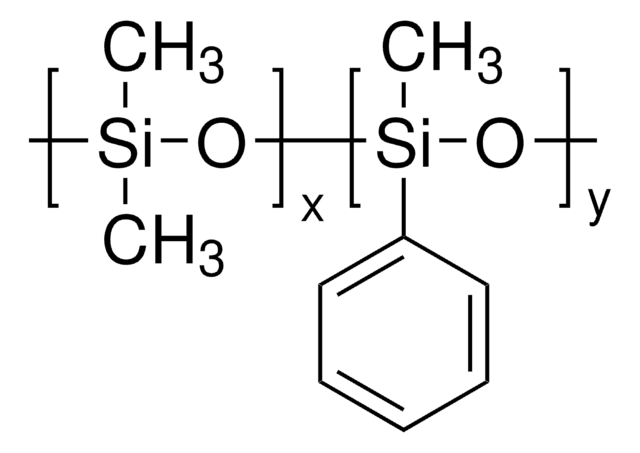409030
Poly(diallyldimethylammonium chloride) solution
average Mw 400,000-500,000 (high molecular weight), 20 wt. % in H2O
Synonym(s):
PDADMAC
About This Item
Recommended Products
form
viscous liquid
mol wt
average Mw 400,000-500,000 (high molecular weight)
concentration
20 wt. % in H2O
refractive index
n20/D 1.37
viscosity
600-900 cP(25 °C)
density
1.04 g/mL at 25 °C
InChI
1S/C8H16N.ClH/c1-5-7-9(3,4)8-6-2;/h5-6H,1-2,7-8H2,3-4H3;1H/q+1;/p-1
InChI key
GQOKIYDTHHZSCJ-UHFFFAOYSA-M
Looking for similar products? Visit Product Comparison Guide
General description
It is a positively charged polyelectrolyte that finds application in various fields such as paper manufacturing, the mining industry, water treatment, protein immobilization, separation of biomolecules, removal of bacteria, flocculation of silica and latex particles, and nanocapsule shell formation.
Application
- Influence of ionic strength on poly(diallyldimethylammonium chloride) macromolecule conformations in electrolyte solutions: Studies the effect of ionic strength on the conformation of PDADMAC in electrolyte solutions. (Z Adamczyk et al., 2014).
- Comparison of permeability of poly(allylamine hydrochloride) and poly(diallyldimethylammonium chloride)/poly(4-styrenesulfonate) multilayer films: Examines permeability differences in multilayer films of PAH and PDADMAC/PSS. (M Elżbieciak-Wodka et al., 2015).
- Effect of small molecules on the phase behavior and coacervation of aqueous solutions of poly(diallyldimethylammonium chloride) and poly(sodium 4-styrene sulfonate): Investigates the impact of small molecules on the coacervation of PDADMAC and PSS. (S Huang et al., 2018).
- Dynamic surface elasticity of mixed poly(diallyldimethylammonium chloride)/sodium dodecyl sulfate/NaCl solutions: Analyzes the dynamic dilational surface elasticity of PDADMAC/SDS/NaCl mixtures. (VV Lyadinskaya et al., 2014).
Storage Class Code
13 - Non Combustible Solids
WGK
WGK 1
Flash Point(F)
Not applicable
Flash Point(C)
Not applicable
Personal Protective Equipment
Certificates of Analysis (COA)
Search for Certificates of Analysis (COA) by entering the products Lot/Batch Number. Lot and Batch Numbers can be found on a product’s label following the words ‘Lot’ or ‘Batch’.
Already Own This Product?
Find documentation for the products that you have recently purchased in the Document Library.
Customers Also Viewed
Articles
We present an article that discusses two applications in particular; first, using these layers as polyelectrolyte membranes to control permeability.
Our team of scientists has experience in all areas of research including Life Science, Material Science, Chemical Synthesis, Chromatography, Analytical and many others.
Contact Technical Service



![Poly[(2-ethyldimethylammonioethyl methacrylate ethyl sulfate)-co-(1-vinylpyrrolidone)] average Mw <1,000,000 by GPC, 20 wt. % in H2O](/deepweb/assets/sigmaaldrich/product/structures/334/533/03fcaede-76a6-4b5a-a992-9565ea1ace4a/640/03fcaede-76a6-4b5a-a992-9565ea1ace4a.png)

